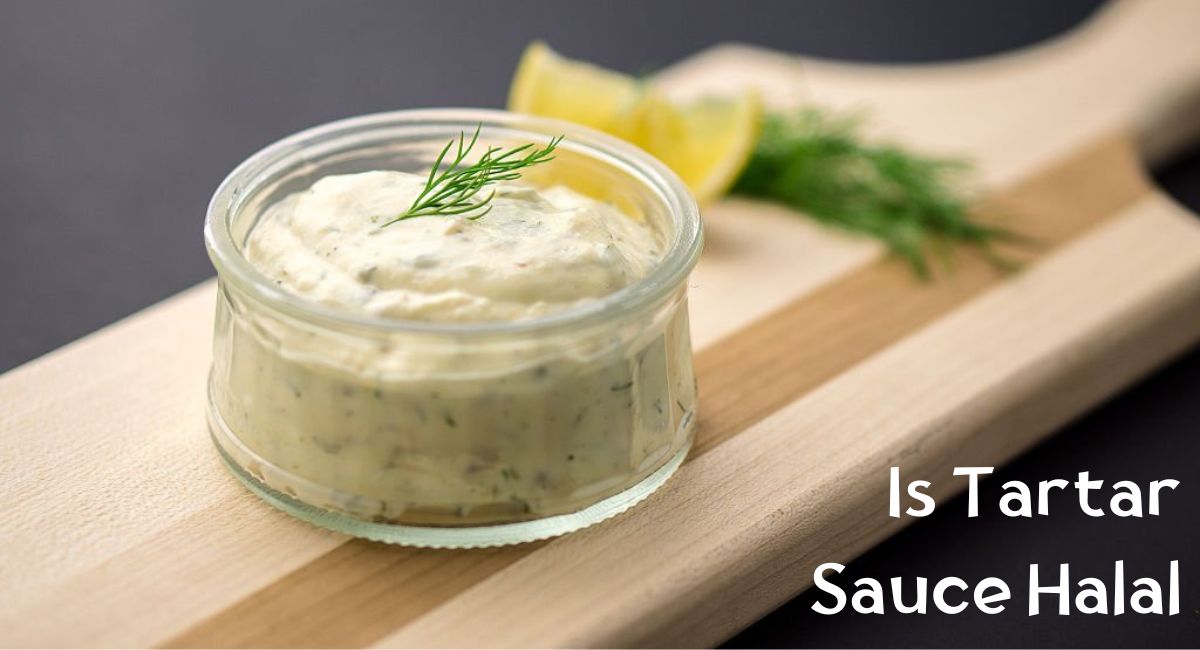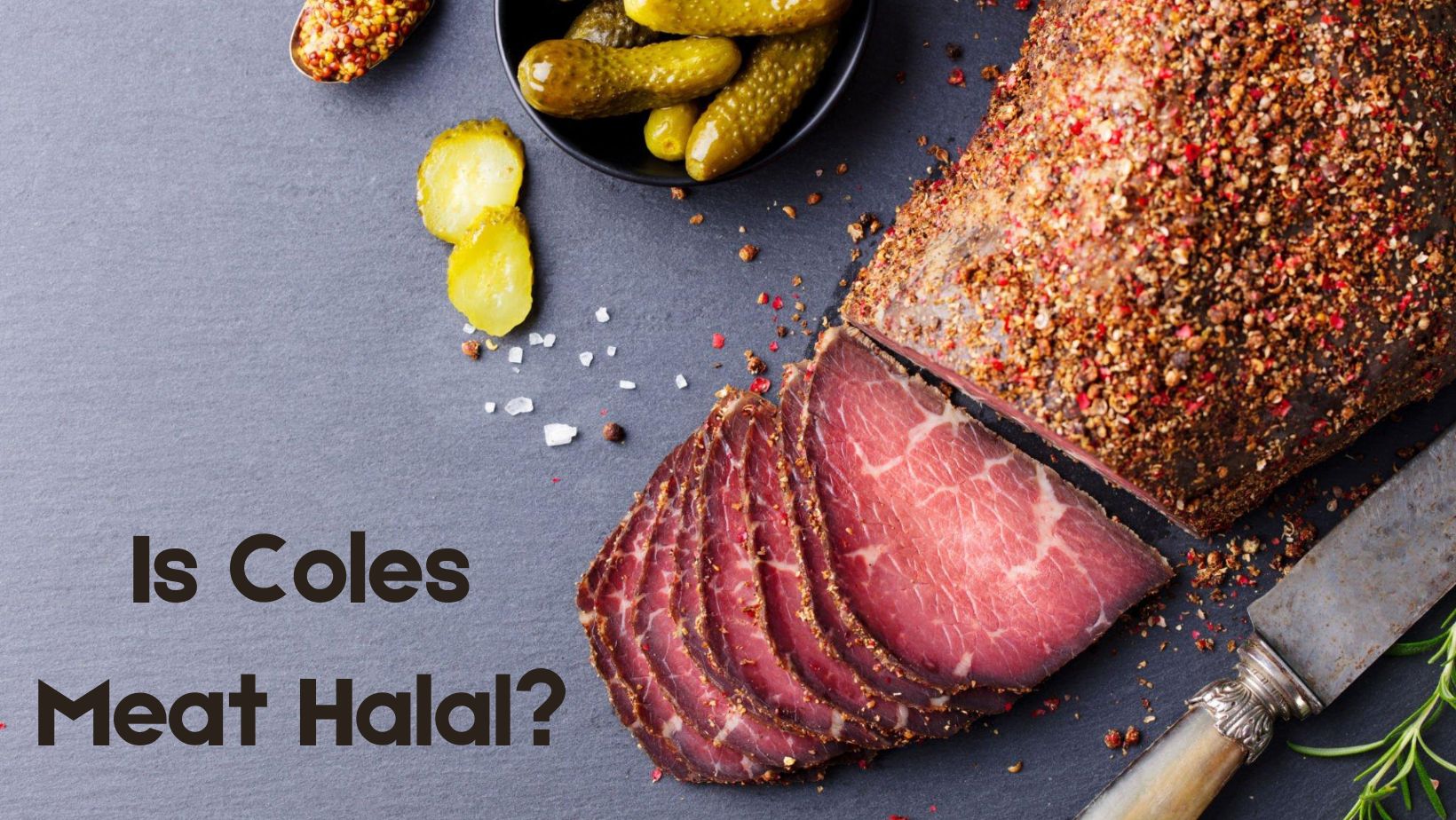Tartar sauce is a popular condiment often enjoyed with seafood dishes like fish and chips. However, whether tartar sauce is considered halal or permissible in Islamic dietary guidelines can be a subject of discussion and interpretation.
In this brief introduction, we’ll explore the key factors that determine the halal status of tartar sauce, shedding light on the ingredients and potential concerns that Muslims may have when deciding whether to consume it.
Understanding the ingredients and preparation methods is essential for individuals following halal dietary restrictions to make informed choices that align with their faith.
Is Tartar Sauce Halal
Tartar sauce, in its basic form, is typically considered halal, as the primary ingredients are mayonnaise or aioli, pickles, capers, onions, lemon juice, and various seasonings. These ingredients are generally considered halal.
However, it’s important to be aware that the halal status of tartar sauce can vary depending on the specific brand and recipe. Some commercially prepared tartar sauces may contain additives, preservatives, or flavorings that are not halal like wine and pork. Additionally, cross-contamination with non-halal ingredients can occur during the manufacturing process.
If you are concerned about the halal status of tartar sauce, it’s a good practice to check the product label for any non-halal ingredients or contact the manufacturer for clarification. Some individuals and organizations that adhere to strict halal dietary guidelines may choose to make their own homemade tartar sauce to ensure it meets their halal requirements.
According to Halalharam.org, the following Tartar sauces are halal:
| Brand | Product Name | Status |
|---|---|---|
| Waterfront Bistro | Tartar Sauce | Halal |
| Vita | Tartar Sauce | Halal |
| Spice House | Tartar Sauce | Halal |
| Silver Spring | Tartar Sauce | Halal |
| Sea-Maids | Tartar Sauce | Halal |
| Red Wing | Tartar Sauce | Halal |
| Piggly Wiggly | Tartar Sauce | Halal |
| Oxford | Tartar Sauce | Halal |
| Little River Seafood | Tartar Sauce | Halal |
| Litehouse | Tartar Sauce | Halal |
| Key Food | Tartar Sauce | Halal |
| Heinz | Tartar Sauce | Halal |
| Fisherman’s Wharf | Tartar Sauce | Halal |
| Fish Market | Tartar Sauce | Halal |
| Elwood | Tartar Sauce | Halal |
| Chelton House | Tartar Sauce | Halal |
| Chef Supreme | Tartar Sauce | Halal |
| Chef Supreme | Tartar Sauce Salad Dressing Based | Halal |
| Chatsworth | Tartar Sauce | Halal |
| Central Market Classics | Tartar Sauce | Halal |
| Cains | Tartar Sauce | Halal |
| Burman’s | Tartar Sauce | Halal |
| Borden | Tartar Sauce | Halal |
| Beano’s | Tartar Sauce | Halal |
| Philips Seafood Restaurants | Tartar Sauce | Halal |
What is Tartar Sauce
Tartar sauce is a creamy condiment that is typically used as a accompaniment to seafood dishes, particularly fried fish and seafood. It is known for its tangy and slightly sweet flavor and is often characterized by its creamy texture and the presence of chopped pickles, capers, and herbs.
The history of tartar sauce is a bit unclear, but it is believed to have originated in Europe, possibly in France or England, in the 19th century. The name “tartar” is thought to be a reference to the Tatars, a group of people from the Eurasian Steppe, although the exact connection to the sauce’s name is not well-documented.
Tartar sauce gained popularity as a condiment for seafood in the United States during the 20th century. It became a staple in seafood restaurants and is commonly served alongside fried fish, shrimp, crab cakes, and other seafood dishes.
Over time, various regional and personal variations of tartar sauce have emerged, with some recipes incorporating additional ingredients like Worcestershire sauce, Dijon mustard, or herbs like dill and parsley. Despite these variations, tartar sauce remains a beloved condiment that complements the flavors of fried or grilled seafood dishes.
Tartar Sauce Ingredients and Recipe
Tartar sauce is a versatile condiment that can be customized to suit your taste preferences. Here’s a basic recipe for making tartar sauce along with its common ingredients:
Ingredients:
- 1 cup mayonnaise or aioli (you can use store-bought or homemade)
- 2 tablespoons finely chopped pickles (dill or sweet, depending on your preference)
- 1 tablespoon finely chopped capers
- 1-2 tablespoons finely chopped onion (red or white)
- 1-2 teaspoons lemon juice (adjust to taste)
- 1 teaspoon Dijon mustard (optional)
- 1-2 tablespoons fresh herbs, such as parsley or dill, finely chopped (optional)
- Salt and freshly ground black pepper to taste
Instructions:
- Prep the Ingredients: Finely chop the pickles, capers, onions, and herbs if you’re using them.
- Mix the Base: In a mixing bowl, combine the mayonnaise or aioli with the lemon juice. If you like a tangier sauce, you can add more lemon juice.
- Add Pickles and Capers: Stir in the finely chopped pickles and capers. These ingredients provide tartar sauce with its characteristic tangy and briny flavors.
- Onion and Mustard: Add the finely chopped onion and Dijon mustard (if using) to the mixture. The onion adds a bit of sharpness and crunch, while mustard provides a subtle kick. Adjust the amount of onion to your liking; some people prefer a milder onion flavor.
- Season and Herbs: Season the tartar sauce with salt and freshly ground black pepper to taste. If you’re using fresh herbs like parsley or dill, finely chop them and add them to the sauce for a fresh and herbaceous touch. This step is optional but adds depth to the sauce.
- Mix and Taste: Stir all the ingredients together until well combined. Taste the tartar sauce and adjust the seasonings, lemon juice, or other ingredients to achieve your preferred flavor and consistency.
- Chill: For the best flavor, cover the tartar sauce and refrigerate it for at least 30 minutes before serving. This allows the flavors to meld and develop.
- Serve: Use your homemade tartar sauce as a dipping sauce for fried or grilled seafood, such as fish fillets, shrimp, or crab cakes. It also goes well with other dishes like fish tacos or as a condiment for sandwiches.
How to Use Tartar Sauce
Tartar sauce is a versatile condiment that pairs well with a variety of dishes, particularly seafood. Here are some common ways to use tartar sauce:
- Seafood Dipping Sauce: Tartar sauce is most commonly used as a dipping sauce for fried or grilled seafood. It complements the flavors of fish fillets, shrimp, crab cakes, calamari, and more. Simply serve it on the side as a dip for your seafood dishes.
- Fish and Chips: In many countries, tartar sauce is a classic accompaniment to fish and chips. Drizzle it over the fried fish or use it as a dip for both the fish and the crispy fries.
- Seafood Sandwiches: Spread tartar sauce on sandwiches or burgers that feature seafood, such as fish sandwiches or crab cake sandwiches. It adds creaminess and flavor to the sandwich.
- Fish Tacos: Use tartar sauce as a topping for fish tacos. It works well with various types of fish, providing a creamy and tangy contrast to the taco fillings.
- Salmon: Tartar sauce pairs nicely with grilled or baked salmon. You can serve it on the side or spoon it over the cooked salmon for added flavor.
- Seafood Platters: When serving a seafood platter or seafood buffet, offer tartar sauce as one of the condiments for guests to choose from.
- Fried Vegetables: Tartar sauce can also be used as a dipping sauce for fried vegetables like zucchini sticks, onion rings, or battered mushrooms.
- Potato Dishes: Some people enjoy tartar sauce with potato dishes like French fries or potato wedges. It can be used as a dip or drizzled over the potatoes.
- Grilled Seafood: While tartar sauce is commonly associated with fried seafood, it can also complement grilled seafood like shrimp skewers, swordfish, or tuna steaks.
- Appetizers: Use tartar sauce as a condiment for appetizers like seafood fritters, crab-stuffed mushrooms, or shrimp cocktail.
Also Read:
Is Mayonnaise Haram: Discover the truth about mayonnaise and its halal status. Uncover the key ingredients and considerations that determine whether this popular condiment aligns with halal dietary guidelines.
Is Ranch Dressing Haram: Dive into the world of ranch dressing and its compatibility with halal principles. Explore the ingredients and production methods to determine if this beloved salad dressing can be part of your halal diet.
Is Aioli Haram: Uncover the savory secrets of aioli and its halal status. Explore the ingredients and culinary traditions behind this creamy garlic sauce to determine if it aligns with your halal dietary requirements.
Is Tahini Halal or Haram: Dive into the world of tahini as we explore its halal status in this comprehensive article. Discover the key factors that determine whether tahini can be enjoyed in accordance with Islamic dietary guidelines, and gain a deeper understanding of this versatile condiment’s place in halal cuisine.
Is Hummus Halal or Haram: Join us on a flavorful journey to uncover the halal status of everyone’s favorite Mediterranean dip, hummus. Delve into the nuances of its ingredients and preparation to find out if it aligns with Islamic dietary principles. This article provides essential insights for Muslims who enjoy this beloved dish.






